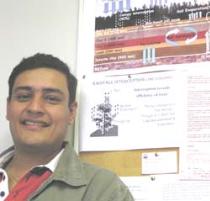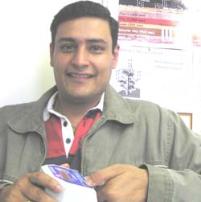Hundreds of gauges help Kartik see the good from the trees
Published on 28 June, 2006
PhD candidate Kartik Venkatraman monitors hundreds of gauges, sensors and probes measuring dozens of different parameters in order to track the performance of 21 native tree species growing in 2 different soil depths at the Rockhampton landfill.
The project is trying to define the best mix of trees and soil depth to reduce leaching of water and methane emission from the rubbish below ground.
 Some of the gauges are monitored electronically and can be checked at wide intervals, but others require exhaustive manual checks.
Some of the gauges are monitored electronically and can be checked at wide intervals, but others require exhaustive manual checks.
"We (Kartik and his team of helpers) are really busy after rainfall," he said.
There are 11 different parameters to be checked just in the area of leaf traits, including leaf angle, hairiness and light interception (which can influence water flows and evaporation).
Branch angles and branching patterns also have a bearing on effectiveness of certain species. Even the bark pattern is described.
The water use of trees is tracked via measurements of sap flow and soil moisture depletion.
The role of trees in intercepting rainfall is gauged via measurements of canopies, stemflow and the infiltration of mulch.
The escape of methane and even the effects of the river tide (in changing the water table, increasing underground pressure and pumping out methane) are also on the agenda.
A weather station at the site records a range of data, including the seemingly obscure aspects of rainfall intensity and duration - but these are correlated with the tree-level and underground-level measurements to track how the trees have coped in different weather circumstances.
With so many parameters and measurements describing the pathways of water and methane, computer modelling (with software from the US Department of Energy) is required to predict the best mix of trees and soil depths.
 "We want to see how much the trees are reducing water infiltration," Kartik said.
"We want to see how much the trees are reducing water infiltration," Kartik said.
"The trees help the soil act as a sponge to prevent much of the water getting to the refuse and forcing out methane".
Kartik's main supervisor is Dr Nanjappa Ashwath and he is gaining help with hydrological modelling from another CQU Plant Sciences colleague and co-supervisor, Dr Ninghu Su. A couple of overseas exchange students have been helping out also.
The project is funded by Rockhampton City Council via Pytolink Pty Ltd Brisbane. Kartik has also received a $5000 grant from the Growing the Smart State PhD funding program.
Originally from Mumbai in India, Kartik has been with CQU for 1.5 years, having completed a Masters in Environmental Engineering by Research at Griffith University.

